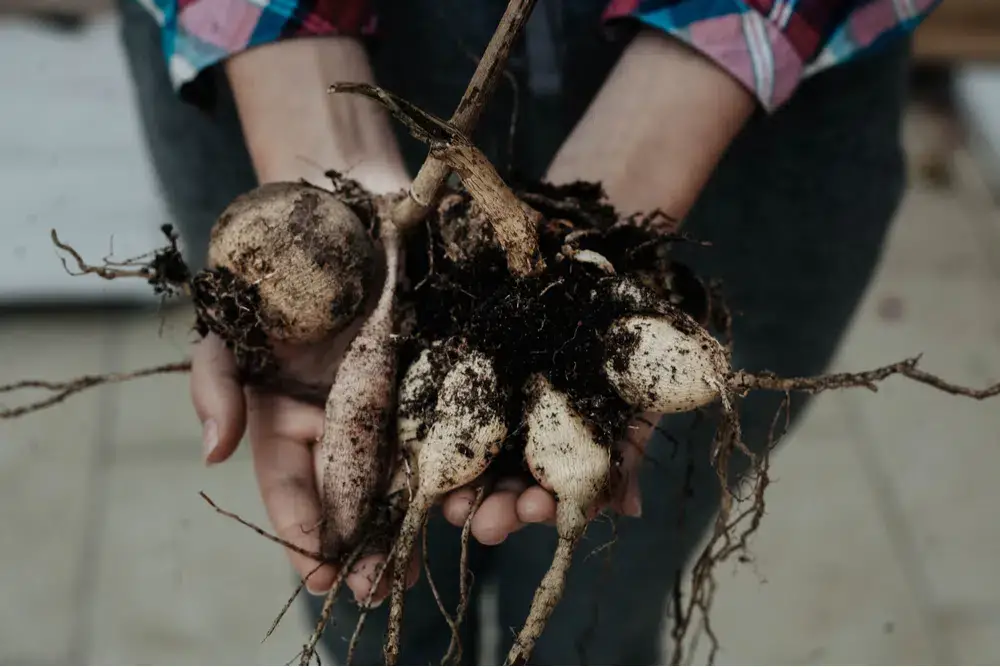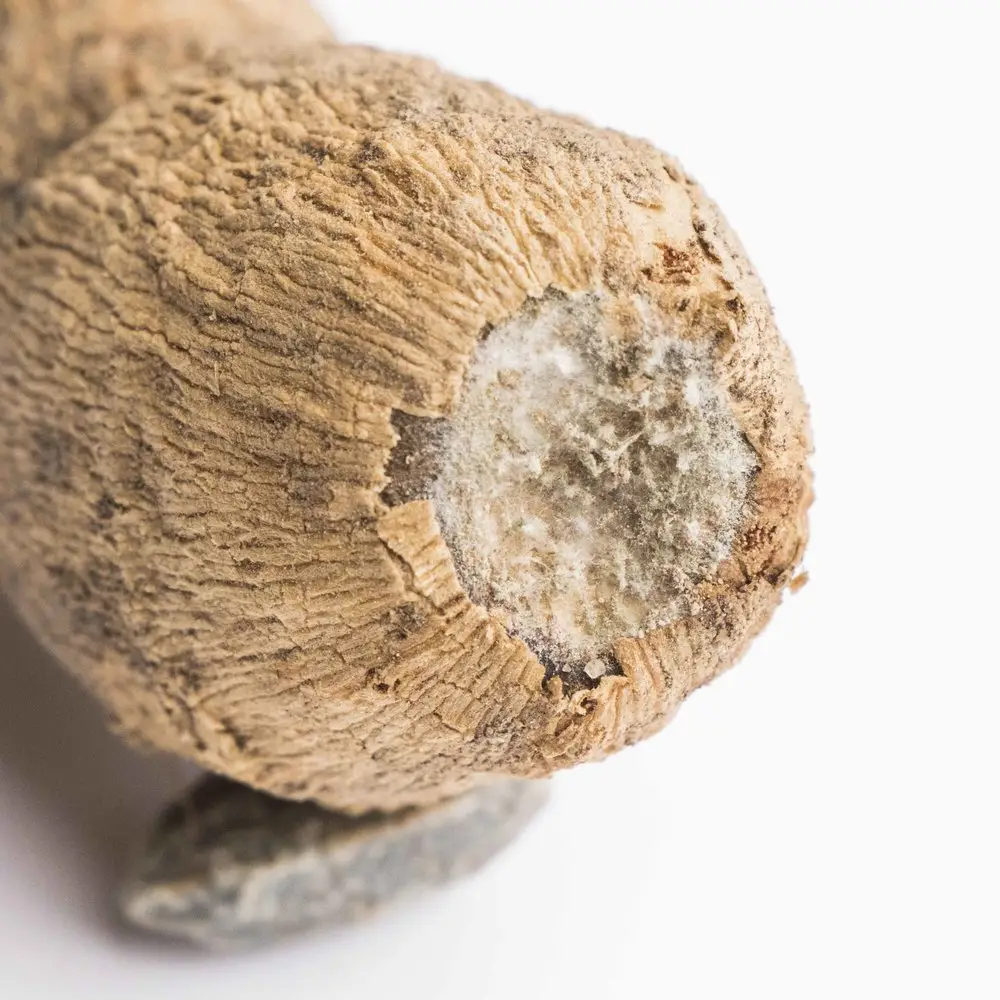Dahlia tubers are a popular flowering plant that can add a vibrant touch to any garden. However, if left in the ground for too long or not stored properly, the tubers can dry out.
But can you use dried out Dahlia tubers?
Yes, you can use dried-out dahlia tubers to plant and grow new dahlias after rehydrating them. Before planting, soak the dried tubers in water for a few hours to rehydrate them. Plant them in well-draining soil in a sunny location, with the crown facing upwards. Water the soil regularly and fertilize the plants as they grow to encourage healthy growth.
See? You do have a way to still plant your dahlia tubers, so relax. Let’s see the whole process of rehydrating the dahlia tubers that have dried out.
Will Dried Out Dahlia Tubers Grow?

Dahlia tubers are hardy and can survive drying out. With proper care, the dried dahlia tubers should sprout and grow into healthy plants.
But there is a certain limit to the amount of drying the dahlia tubers can endure. When the tubers are completely dried out and hollow, you cannot use them. They should also crumble very easily when you touch them.
Also, if there is rot or if the tubes are dead, you should probably get some new ones.
Signs of Excessively Dried Out of Dahlia Tubers
The symptoms of excessively dried out dahlia tubers include common signs of drying. For example, calla lily flowers turn green when they have an infestation.
Similarly, several signs point to a dahlia tuber being excessively dried out:
- Hard, dry texture
- Shrunken appearance
- Signs of decay
- Lack of sprouts
Discard any tubers that show these signs, however, slightly dried out tubers can be planted. You need to rehydrate them before planting.
How to Tell If Dahlia Tubers Are Rotting?
The symptoms of rotting dahlia tubers are similar to those of an overly dried one- lack of sprouts and signs of decay. Other symptoms include-
- Soft and mushy texture
- Bad odor
Dahlia tubers that are completely rotten cannot be saved. However, you can save dahlia tubers from partial rot.
How To Tell If Dahlia Tubers Are Dead?

Symptoms of a dead Dahlia tuber include-
- Visible mold.
- Soft, squishy spots.
- No signs of growth. If the tuber has not produced any shoots or new growth, it is likely dead.
- Signs of decay inside. The tuber will not be viable if it rotted into the neck.
Dead dahlia tubers cannot be planted, so, prepare new ones for planting.
How To Fix Dried Out Dahlia Tubers?
When rehydrating dried-out dahlia tubers, the process is fairly simple but requires a bit of patience.
To begin, take the dried-out tubers and cover them with a mixture of soil and compost. The soil and compost will help to retain moisture and prevent the tubers from drying out further. It’s best to do this a couple of months before the spring planting season, giving the tubers plenty of time to rehydrate.
Before planting the rehydrated tubers, it’s essential to give them an overnight soak in warm water. This will help to fully rehydrate the tubers and ensure they’re ready to grow. It’s important to use warm water and not hot water, as it can damage the tubers. After soaking overnight, the tubers should feel plump and hydrated, indicating that they are ready to be planted.
Once the tubers are ready, you can plant them in a well-draining soil mixture, in a sunny spot with enough space between them, following the normal planting instructions. Keep the soil consistently moist but not soggy, and with proper care, the dahlias will sprout and grow.
How To Properly Take Care of Your Dahlia Tubers
Maybe this time you have somehow managed to revive your dahlia tubers. Additionally, you should prevent this from happening in the future.
So, here are some tips for taking good care of your Dahlia tubers to prevent them from drying, rotting, or dying.
Tip One: Do Not Dig Them Up Too Early
Having the roots in the ground for as long as possible will make the plant healthier. In addition to curing the plant, this allows it to collect and store energy for the next growing season.
So, collect your tubers as late as possible to get some healthier tubers and wait for the plant to die before collecting. You may cut the tops and let them remain in the ground for one or two more weeks if you wish.
Tip Two: Cutting the Stalks Properly
When cutting the stalks, leave at least a few inches of the stalk above the ground. Make sure you cut them a few days before digging so the eyes appear and you can divide them easily.
The hollow stalk should be covered with foil to prevent water from entering and rotting the tubers.
Be sure to dip your scissors in a solution of one part bleach to ten parts water before switching between plants when cutting stems or dividing clumps. By doing so, you will prevent the spread of viruses between the plants.
Tip Three: Do Not Hurt Any Root
With a garden fork, carefully dig one foot around the plant’s main stem while digging up the clumps. In this way, you won’t accidentally damage any roots. You should then carefully lift the clump with a shovel or garden fork. Dahlia tubers’ necks are very fragile at this stage, so let them dry for a few hours before continuing.
Tip Four: Wash the Tubers
Wash off excess dirt using a water hose or, preferably, in a tub. The soil may contain microorganisms that might harm the tubers.
Tip Five: Check For Rot
Look for dried or rotten parts before you start storing your tubers. If there are, cut away those parts. If there is rot, it may spread to the good tubers.
Tip Six: Get Rid of the Mother Root
While you are at it, cut away the mother root and all the stems. Not doing this can cause crown rot.
Tip Seven: Hydrate Your Tubers
When you store your Dahlia tubers, make sure they are stored in a cool, dry, and dark place. The ideal temperature is 40–45 degrees Fahrenheit. Also remember, keeping the dahlia tubers at a temperature below 35 degrees may kill them.
Never store your Dahlia tubers in plastic, as this causes rot. It’s better to store them in cardboard boxes with moist sand or vermiculite. Other viable mediums to store them in are peat moss, sawdust, a mix of shredded newspaper, and pine shavings.
Check up on your Dahlia tubers once a month. When you do, spray a good amount of water on the storage medium to keep the tubers hydrated.
These tips should be enough to keep your Dahlia tubers from getting dry, dying, or rotting. Also, do take proper care of the Dahlia plant. Keep an eye out for leaves turning yellow, which is usually a sign of stress.
Frequently Asked Questions (FAQs):
How late can you plant dahlia tubers?
In most regions, you can plant dahlia tubers as late as May or June, depending on the weather. They should continue to bloom until the end of the winter season when it comes to their blooming season.
How do you wake up dahlia tubers?
Two weeks before planting, take your dahlia tubers to a warmer environment with a temperature of around 60 degrees Fahrenheit. Doing so should wake up your Dahlia tubers.
How deep should dahlia tubers be buried?
Plant dahlia tubers 10 cm deep in fertile, well-draining soil outside in the spring once the frost has passed. In areas with extreme cold, dig up dahlias and store them in a cool peat over the winter. They prefer a sunny location and are best spaced 45 cm apart.
Conclusion
Dried out dahlia tubers can be a frustrating problem for gardeners. However, with proper care and attention, it is possible to revitalize these tubers and successfully plant them in the garden.
By providing adequate watering and ensuring that the tubers are planted at the correct depth, gardeners can help their dahlias thrive.
Additionally, it is important to regularly check the moisture level of the tubers and to take steps to protect them from extreme temperature fluctuations. With the right approach, it is possible to successfully grow beautiful dahlias despite the challenges of dried-out tubers.
- Why Are There Still No Tomatoes in My Tomato Plants? Let’s Fix the Issue! - July 13, 2023
- Water Propagation White Stuff on Roots: Everything You Should Know! - July 11, 2023
- String of Dolphins Drying Up: Solved! - July 11, 2023

Pingback: Plumeria Stem Wrinkled: Reasons, Remedies & Treatment!